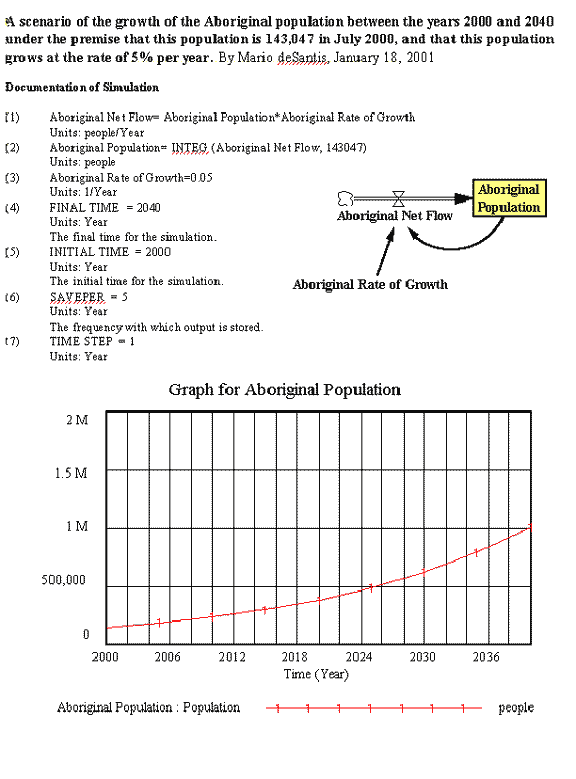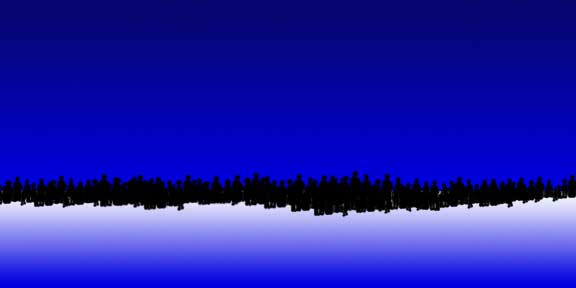|
- |
|
| Nipawin - January 20, 2001 - by: Mario deSantis | |
|
fragmentary |
Our provincial aboriginal social policies have been focused in the last ten years on Native |
| claims, on Aboriginal self-government, and on economic development through gambling. | |
| We are in a so called Knowledge economy, yet our government has not provided the | |
| opportunities for our Aboriginal people to learn. Our government has continued a fragmentary | |
| economic policy of divide and conquer with the result to extend the social condition for | |
| the benefit of the few and privileged within our Aboriginal community. The office of the | |
| provincial auditor has reported the poor predicament of our children living on reserves(1). | |
| Our provincial jails include over 9,000 Aboriginal prisoners. | |
|
|
|
|
social and |
I have previously reported the financial liability for not educating our poor children(2) Today |
| I want to provide a dramatic scenario for the future demographic changes of our province. This | |
| scenario is not a prediction or a forecast of the growth of the Aboriginal people in | |
| Saskatchewan; it is just a reasonable scenario to emphasize, today and not tomorrow, the need | |
| to address social and economic policies towards our Aboriginal population. | |
| ---------------A scenario of growth for the Aboriginal population: | |
The registered Indian population living on reserves increased to 38,444 in 1996 |
|
|
24% |
from 30,893 in 1991, that is a population jump of 24% in a span of 5 years(3). |
The registered Indian population living on and off reserve increased to 90,797 in |
|
2000 from 74,095 in 1996, that is a jump of 23% in a span of 4 years(4). |
|
|
|
|
|
14% |
The registered and non registered Aboriginal population is presently 14% of the total |
| population(5). In July 2000 there were 1,021,762 people covered by Saskatchewan Health. | |
| Therefore, there were close to 143,047 registered and non registered Aboriginal people | |
| living in Saskatchewan in July 2000. | |
|
|
|
|
|
From the statistics provided above we have an indication that the net growth of the registered |
|
5% per year |
and non registered Aboriginal population could have been in the order of 5% per year. |
|
|
|
|
one million |
Let us now provide a scenario of the growth of the Aboriginal population between the years |
| 2000 and 2040 under the premise that this population is 143,047 in July 2000, and that this | |
| population grows at the rate of 5% per year. I have simulated the growth of the Aboriginal | |
| population and after 40 years this population reaches the value of one million people. | |
|
|
|
|
social and |
You can refer to the following pictures reporting the details of this simulation run through |
| the Vensim(6) software package. But what is important to notice is that the Saskatchewan | |
| total population has been stagnant at about one million people for the last decades, and now | |
| we are presenting a reasonable scenario, as at this time, that the Aboriginal population could | |
| reach one million people in the year 2040. I leave to the readers and to our politicians ponder | |
| about the social and economic consequences for not addressing today the changing | |
| demography of this province. | |
 |
|
| ------------References/endnotes: | |
| List of relevant political and economics articles http://ensign.ftlcomm.com | |
| 1999 Fall Report, Volume 2, Report of the Provincial Auditor, Saskatchewan, Chapter 2, Education, pages 117-132 | |
|
|
|
| Honourable Eric Cline has not balanced the budget yet, he forgot our school-children, by Mario deSantis, April 2, 2000 | |
|
|
|
| Census Population, 1991 & 1996, Communities & Regions, INDIAN RESERVES, Saskatchewan Bureau of Statistics | |
|
|
|
| People registered under the Indian Act living on and off reserve was 74,095 in 1996 (Statistics Canada, Census 1996) and it increased to 90,797 in 2000 (Appendix 1-2000 Covered Population, Saskatchewan Health). http://www.statcan.ca:80/english/Pgdb/People/Population/demo37.htm http://www.gov.sk.ca/health/covpop2000/CovPopBook2000.pdf | |
| Aboriginals poised to irrevocably alter political landscape, by Adam Killick, National Post, February 07, 2000 | |
|
|
|
| A free of charge educational package for Vensim software is available at http://www.vensim.com | |
